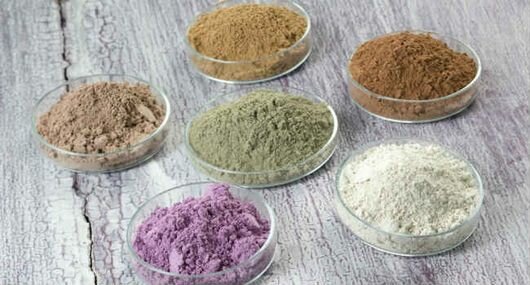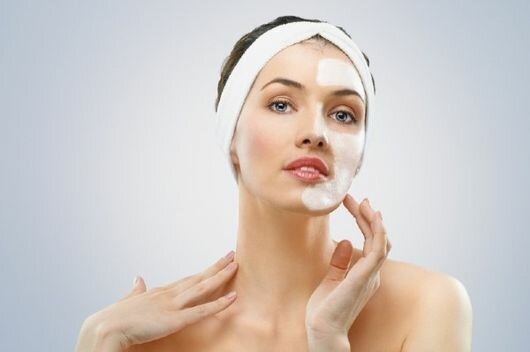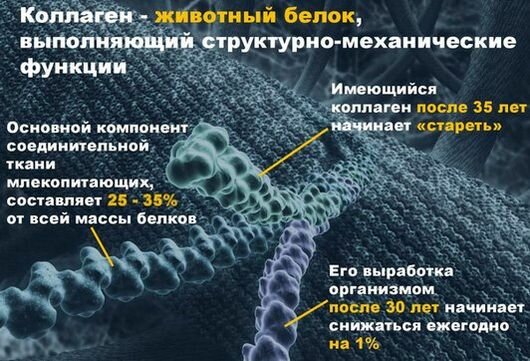One of the most common cosmetic procedures to eliminate wrinkles is fractional laser rejuvenation . What is it and what kind of feedback about it are left by specialists and clients who have passed the procedure, you can find out below.
- The principle of the fractional laser
- Types of fractional exposure: classification
- Ablative method
- Non-ablative method
- What devices are used
- Indications
- Optimal age for rejuvenation
- Contraindications
- How is the procedure
- How painful is the fractional rejuvenation procedure
- What effect to expect
- Fractional rejuvenation of the skin of the face: before and after photos
- Possible complications and consequences
- How to avoid complications
- Reviews of doctors about the procedure
- Rehabilitation after exposure to fractional laser
- How to care for your skin after the procedure
- Cost
- Cons and harm
- How often do you need to do fractional rejuvenation
The principle of the fractional laser
Fractional rejuvenation is a modern method of getting rid of signs of skin aging with a special laser. The effectiveness of the procedure is achieved due to the zonal effect of the fractional laser on the deep layers of the epidermis, which starts the process of cell renewal and further promotes rejuvenation.


Skin cells eventually stop updating due to a loss of self-healing ability. As a result, folds form on the upper layers of the skin, pigmentation, sagging appears.
In order for the cells to regain their ability to regenerate, it is necessary to remove the upper layer of dead areas and activate the activity of those cells that are deeper.
This is done by a special laser, the beam of light of which is divided into many small rays.
The laser, forming a grid on the surface of the skin, acts only on certain areas of the skin (microzones). Other cells remain intact. These rays burn the upper layer of the epidermis, due to which living cells are activated, and the process of formation of new ones is started.


The result – the skin is smoothed out, and wrinkles, acne, scars and age spots become less noticeable or even disappear.
Types of fractional exposure: classification
Despite the fact that patients know in advance how fractional rejuvenation is performed, what it is – patient reviews about the procedure are always mixed. To some extent this is due to different types of procedures. There are two methods of carrying out the procedure: ablative and non-ablative. The method of exposure to the skin is different for them, so the result will be different.


Ablative method
The name of this type of procedure comes from the word ablation , which means ” removal “. With the ablation method, the laser acts on the epidermis (upper layer of the skin) and removes it. This method is only suitable for combating superficial manifestations of skin aging:
- first facial wrinkles;
- stretch marks on the skin;
- flabbiness;
- enlarged pores.
The advantage of the ablative rejuvenation technique is that the effect is noticeable instantly.
However, this method will not work to resolve underlying problems. Another disadvantage is the need for frequent repetition of the procedure to maintain results.
Non-ablative method
This technique is more effective for deep wrinkles and serious age-related skin changes, since the laser penetrates into the deeper layers of the dermis without disturbing the upper areas. This leads to the activation of metabolic processes and stimulation of collagen synthesis, thereby increasing the growth of new skin cells.
In other words, the non-ablative method allows you to rejuvenate the body from the inside, as a result of which its effect has a lasting result.


It’s important to know! To obtain high efficiency from the procedure, a combination of two methods is often used – ablative and non-ablative.
This approach allows you to rejuvenate the skin both from the inside and outside, and to fix the result for a long time.
What devices are used
Different cosmetology clinics for fractional rejuvenation use different types of devices. The most common:
- SmartXide DOT (DEKA),


- Palomar star and lux,
- Lumenis m22,
- Matrix,
- Dermablate lifting,
- Asclepion Dermablate Effect,
- RAY CO2,
- Dermablate MCL.
They have proven themselves due to the ease of control over the depth of exposure to the beam and minimal damage to the skin. Basically, all manufacturers are European, which is confirmed by the high quality of equipment.



 Do not miss the most popular article in the rubric:
Do not miss the most popular article in the rubric: Facial massage according to the Japanese doctor Asahi Zogan.
Indications
Reviews of fractional rejuvenation can be found different, since such a procedure is used for various indications. And this suggests that in different patients the effect on the skin and the effect will always be different. But basically the technique is designed to eliminate the following problems:
- deep and fine wrinkles;
- stretch marks and sagging;
- skin pigmentation;
- papillomas;
- spider veins;
- warts;
- scars, scars;
- acne and post-acne.


Optimal age for rejuvenation
The course of fractional rejuvenation is absolutely safe, so it can be used at any age. However, it is most often used to get rid of age-related skin changes, so it is most suitable for people after 40 years.


Often, the procedure is used on patients who have undergone surgical skin tightening or lipofilling.
Contraindications
Do not do the procedure in the following cases:
- inflammatory processes in the body;
- acne;
- cancerous diseases;
- herpes in the process of exacerbation;
- some types of allergies;
- infectious skin diseases;
- poor blood coagulability;
- epilepsy;
- diabetes;
- tan acquired in the last 2-3 weeks before the procedure;
- pregnancy and lactation.
In addition to the listed contraindications, there may be individual cases, therefore, before undergoing the procedure, you must consult with a specialist.
How is the procedure
Before starting the procedure, the doctor diagnoses and may prescribe antiviral or immunostimulating drugs.
On the day of the procedure, the cosmetologist applies a local anesthetic (cream, ointment, etc.). After a while, as the drug works, the procedure itself is carried out – the cosmetologist with a laser device acts on certain areas of the skin.
The procedure takes about 30-60 minutes or more, which depends on the laser rejuvenation technique and the size of the treated area.


At the end of the procedure, the specialist instructs on further care methods for the treated skin.
Since fractional rejuvenation is less traumatic, it is done on an outpatient basis. After the procedure, the patient can immediately go home.
How painful is the fractional rejuvenation procedure
To understand what is the procedure of fractional rejuvenation, and how painful it is, you need to try it for yourself. Often on the Internet, there are reviews that the pain was much stronger than expected.
But each has its own pain threshold, especially in different cosmetology clinics they use different painkillers, the reaction to which is individual.
When choosing a clinic and specialist, it is important to know in advance which pain medications they use, and if there is an allergic reaction to this drug.
What effect to expect
To understand how much the appearance changes during fractional rejuvenation, it is best to see photos taken by patients before and after the procedure.
The effect can be observed after the first session: the skin becomes smoother, fresher, small wrinkles disappear, and large ones decrease in size.
In women with severe age-related pigmentation, you can notice a significant lightening of the skin and a decrease in age spots. The oval of the face acquires an even, toned look.


During the first week, areas of the skin where the procedure was performed will be inflamed. The following symptoms may occur:
- Light burning. It appears in the first 2-3 hours after the procedure. Easily removed with anti-inflammatory drugs.
- Redness. It lasts for 1-2 days.
- Peeling. Appears on the second day after the procedure and lasts 4-5 days.
Fractional rejuvenation of the skin of the face: before and after photos
Possible complications and consequences
Subject to all safety rules, no unpredictable consequences arise during the procedure. However, if a layman took on the job, there could be complications. Therefore, with the following symptoms, you should immediately consult a doctor:
- Severe swelling.
- Redness does not disappear.
- Unbearable pain.
- The rehabilitation process lasts more than two weeks.
- Undesirable effects appeared – scars, acne, age spots.
How to avoid complications
To avoid complications, it is necessary to follow all procedures prescribed by the cosmetologist for skin care during the recovery period and before the procedure. You can not hide diseases from the doctor for which there may be contraindications.
Note!
The choice of a good specialist is the key to a successful fractional rejuvenation.
During the recovery period of the skin, which takes 5-7 days, you can not use cosmetics and apply scrubs and peels to clean the skin.
After treating the skin with a laser, one should refrain for some time from direct sunlight on the treated areas. Therefore, the most optimal period for carrying out the methodology is autumn-winter, when low solar activity is observed.
Another condition is compliance with the interval between procedures, which is 1.5–2 months, i.e. for the autumn-winter period, you can go through only 2-3 procedures.
Reviews of doctors about the procedure
Fractional rejuvenation is a very effective and affordable method that allows you to quickly put your skin in order, which can be observed by doctors. This method received a lot of positive feedback from them. They believe that fractional rejuvenation is really capable of removing wrinkles and pigmentation, giving the skin a fresh and healthy appearance.
According to the recommendations of doctors, for the lasting effect of rejuvenation and the complete elimination of age spots and other skin imperfections, it is necessary to undergo fractional course rejuvenation.
Rehabilitation after exposure to fractional laser
The recovery period depends on the method chosen and lasts an average of 1-2 weeks. The first few days there are active skin healing processes. At this time, itching and redness should disappear. A crust forms on the skin, which, with proper care, disappears within a week.
Attention!
You can return to your normal lifestyle after 7 days after healing the skin!
After 3 weeks, the skin looks completely healthy, well-groomed and smooth. Her color becomes lighter than before. Pigment spots also lighten or decrease in size.


The need for additional procedures should be discussed with a specialist. But, as a rule, 2-6 procedures are performed for effectiveness.



 Do not miss the most popular article in the rubric:
Do not miss the most popular article in the rubric: Face fitness for lifting the face contour, rejuvenation, muscle tone. Master class from Elena Karkukli
How to care for your skin after the procedure
Skin care during its rehabilitation is uncomplicated, but it is important to follow all the instructions of a cosmetologist:
- To restore faster, moisturizing and anti-inflammatory ointments are used. In the first few days, you need to use the cream every hour. Over time, the interval decreases.
- Crusts that form on wet areas cannot be removed by force. This threatens tissue infection and even scarring.
- The resulting itching that accompanies healing must be ignored so as not to infect the infection.
- It is necessary to sleep, giving the head the highest position to avoid the appearance of edema.
- It is possible to take antibiotics in the first week after the procedure on the recommendation of a doctor.
- In the first week, when going out, you must wear a medical mask.
- To moisturize the skin, apply compresses with vinegar solution.
- Use creams with UV filters.
- To accelerate the rehabilitation process, gels with the presence of fibroplasts are prescribed. If there are any diseases or a predisposition to allergies, additional drugs may be prescribed.
- The first 3 weeks you can not use abrasive cosmetics and cleansing masks, because the new skin is very thin and vulnerable.
- Decorative cosmetics can be used only a week after the procedure, when the crust completely disappears.
In general, the duration of specific skin care recommended after exposure to a fractional laser is 1 month.
Cost
In reviews of such rejuvenation, you can often find the question of the cost of the procedure. It is impossible to say in advance how much it will cost, because the cost is affected by the type of fractional effect, the surface area that needs to be processed, and the nature of the problem.
It is also worth considering the area of the treated skin area.
Prices in each clinic are different, but the approximate cost of one session varies from 18000 to $ 313.
But it should be borne in mind that in order to achieve maximum effect, it is necessary to take a course consisting of several sessions.
Cons and harm
On each website of cosmetology clinics for advertising, only the positive qualities of fractional rejuvenation are described, but the negative aspects of the process are hushed up. Given the numerous reviews of women who have experienced the method themselves, we can highlight some of the disadvantages of this system:
- The recovery process takes longer than negotiated.
- Allergy sufferers need to know that the likelihood of an allergic reaction is very high.
- The skin is much redder than on advertising photographs of sites.
- Rejuvenation is ineffective. Swelling on the face and bags under the eyes after the procedure give even more age.
- Wrinkles do not get smaller. When treating the effects of acne and pigmentation, there is an effect, but it does not remove wrinkles.
- Expensive. There is little sense from one session, it is necessary to take a course. But since the price is very high, several sessions are very expensive.
How often do you need to do fractional rejuvenation
The fractional laser rejuvenation technique is less traumatic, and the skin that has undergone laser treatment is quickly restored. And the zonal effect of the rays on the skin and the regulation of the depth of wave penetration allows you to achieve the greatest positive effect.
This method starts natural regenerative processes in the body, so the result can be enjoyed for a long time.


When combining two types of fractional rejuvenation, the positive effect lasts for a long time, sometimes up to 2-3 years. This suggests that such a procedure, to maintain skin tone, will need to be done not so often. From the reviews of qualified specialists, it follows that maintaining a healthy lifestyle significantly improves appearance and prolongs youth.
Useful video about fractional facial rejuvenation
Video review on laser resurfacing










